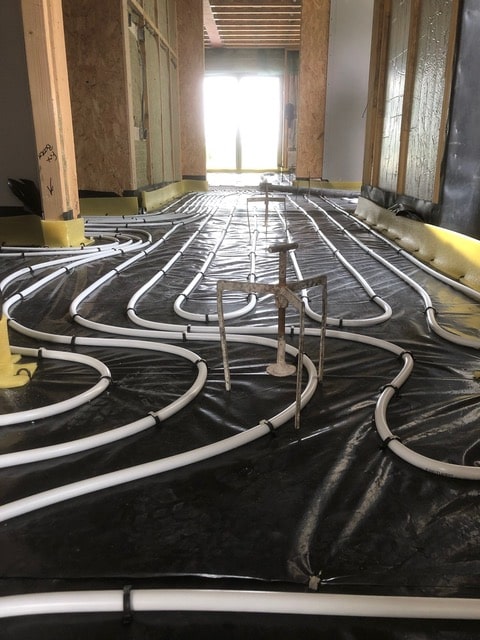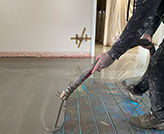Underfloor heating is being installed more and more in new buildings these days, as well as existing ones, because it has so many advantages over a radiator system. Not the least of these is that you get more space in a room because there are no radiators, and furthermore, with the best will in the world, you can hardly describe a radiator as attractive. Underfloor heating on a concrete floor is out of sight.
Another big advantage of underfloor heating is that it spreads the heat evenly across the room, whereas with a radiator system there will always be some areas that are cooler than others. In addition to that, each room has its’ own dedicated thermostat, so it enables you to keep rooms at different temperatures as required. While it is the case that many radiators now have thermostatic controls, they can be rather unreliable.

When you have a radiator system, this will encourage dust to move around the room because of the convection. This is not good for anyone who has asthma or may suffer from allergies. When you have underfloor heating on a concrete floor, this simply doesn’t happen.
There are two types of underfloor heating, electric and water-based. An electric system, as you might guess, uses electric heating cables or heating mats, whereas a water system pumps hot water around the room under the floor in a pipe. Electricity, as we all know too well, is expensive, and is only likely to get more so in the longer term. A water-based system can be heated using a ground or air-source heat pump which can make further savings.
You Need A Screed
Whichever type of heating system you choose, you will need to envelop it in a screed in order to produce a level surface upon which to lay the final flooring. Tile, stone, and even concrete are all good choices for use with underfloor heating because they retain heat and release it gradually. This means that the system will use less energy to heat the room, and certainly a lot less than a radiator system where a lot of the heat produced is wasted.
When considering screeds, there are two choices, either a traditional sand and cement screed or a modern liquid screed. At UK Screeds, we install liquid screeds because of the many advantages that they have over and above sand and cement. We will go into these in another article.








